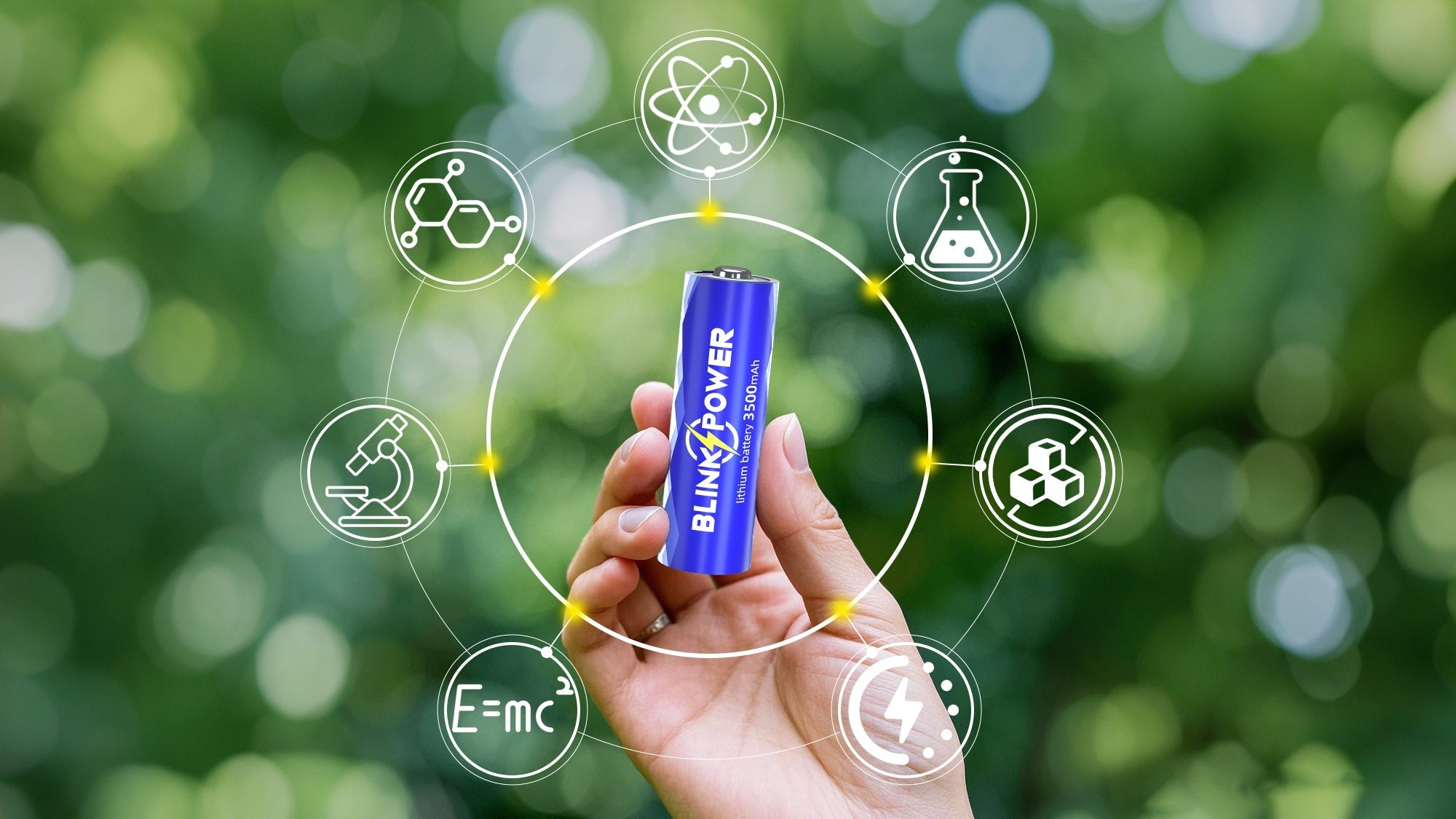I. Basic Terms
1. Battery
A device composed of two or more cells connected in series or parallel to store and release electrical energy.
2. Cell
The basic unit of a battery that generates electrical energy through chemical reactions.
3. Electrolyte
The medium used in batteries to conduct ions, which can be liquid, gel, or solid.
4. Cathode
The electrode from which electrons flow out of the battery, typically the positive electrode during discharge.
5. Anode
The electrode into which electrons flow during discharge, typically the negative electrode.
6. Capacity
The total amount of electrical energy a battery can provide under specific conditions, usually expressed in ampere-hours (Ah) or milliampere-hours (mAh).
7. Volt:
The unit of measure for electrical potential or voltage.
8. Watt:
The unit for measuring electrical power, i.e., the rate of doing work, in moving electrons by, or against, an electrical potential. Formula: watts = amperes x volts.
9. Watt-Hour (Watt-Hrs, WH)
The unit of measure for electrical energy expressed as watts x hours.
10. Open-Circuit Voltage (OCV)
The voltage of a battery when it is not connected to a load.
11. Working Voltage
The voltage of a battery when it is operating under load.
12. Cut-off Discharge Voltage
The minimum voltage at which a battery is considered to be fully discharged.
13. Charge Limit Voltage
The voltage at which a battery transitions from constant current charging to constant voltage charging during the charging process.
II. Maintenance and Fault Terms
1. Self-Discharge
The natural loss of electrical charge in a battery when it is idle.
2. Sulfation
The growth of lead sulfate crystals in lead-acid batteries, which can degrade battery performance.
3. Memory Effect
A phenomenon in nickel-cadmium batteries where repeated partial discharges lead to a decrease in capacity.
4. Overdischarge
Continuing to discharge a battery below its cut-off voltage, which can damage the battery.
5. Overcharge
Continuing to charge a battery after it has reached full charge, which can lead to damage.
6. Thermal Runaway
A condition during charging where the temperature and current in a battery increase mutually, potentially leading to damage or fire.
7. Leakage
The escape of electrolyte from the battery to the external environment. Leakage can be caused by manufacturing defects, external impacts, prolonged use, overcharging, or packaging issues.
8. Electrolyte Decomposition
The breakdown of electrolyte within the battery due to excess water or an insufficient electrochemical window, leading to gas generation, swelling, and leakage.
9. Packaging Issues
Corrosion of the aluminum-plastic film or packaging damage in soft-pack batteries can lead to leakage.
10. Leak Detection
Methods such as airtightness testing, red dye testing, and high-temperature/high-humidity testing are used to detect leakage in batteries.
11. Safety Vent
A device that allows gas to escape when the internal pressure of a battery becomes too high, preventing explosion.
12. Sealing Compound
A material used to seal the battery cover, casing, or terminals.
13. Vent Plug
A component used to seal the filling port while allowing gas to escape.
14. Exhaust Valve
A component that allows gas to escape when the internal pressure of the battery exceeds a set value.
III. Performance Indicator Terms
1. Energy Density
The amount of energy a battery can store per unit volume or weight, typically expressed in watt-hours per kilogram (Wh/kg) or watt-hours per liter (Wh/L).
2. Power Density
The amount of power a battery can output per unit weight or volume, typically expressed in watts per kilogram (W/kg) or watts per liter (W/L).
3. Cycle Life
The number of charge-discharge cycles a battery can complete under specific conditions.
4. Depth of Discharge (DoD)
The percentage of the battery's rated capacity that has been discharged.
5. State of Health (SoH)
The percentage of the battery's rated capacity that can still be achieved after a period of use or storage.
6. State of Charge (SoC)
The percentage of the battery's current charge relative to its rated capacity.
IV. Structural and Material Terms
1. Separator
An insulating material used to isolate the positive and negative electrodes to prevent short circuits.
2. Electrode Plate
The electrode in a battery used to store and release electrical energy.
3. Case
The outer shell used to encase the battery, typically made of plastic or metal.
4. Alloy
A mixture of metals used in electrodes, such as the cadmium alloy in nickel-cadmium batteries.
5. Jelly Roll
The structure formed by winding the positive and negative electrodes in cylindrical batteries.
6. Laminated Aluminum Plastic Film
The material used for the outer casing of soft-pack batteries.
V. Charging Terms
1. Constant Current Charging
Charging a battery with a constant current.
2. Constant Voltage Charging
Charging a battery with a constant voltage, where the current decreases as the battery voltage increases.
3. Float Charging
Maintaining a battery's charge with a low current.
4. Trickle Charging
Supplemental charging of a battery with a very low current to prevent self-discharge.
5. Fast Charging
Charging a battery to full capacity in a short time (e.g., within 2.5 hours).
6. Cut-off Voltage
The voltage at which charging or discharging is terminated.
7. Charge Efficiency
The ratio of the actual energy stored in the battery to the input energy during charging.




Share:
How to Prevent Battery Injury to Children
How to Replace and Maximize Your Blink Doorbell Batteries